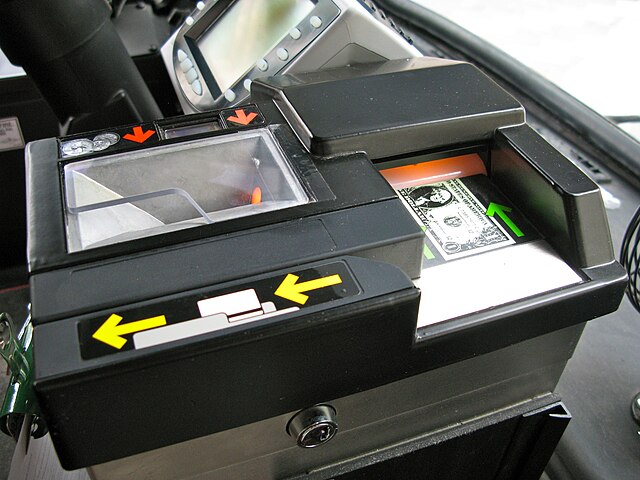A Fair Fare

Oran/wikimedia
Metro's ongoing survey about the fare structure will generate as many different ideas as there are respondents. In his story about it, Zach observed that there is a tradeoff between fairness and simplicity. However, that greatly undersells the complexity of the tradeoff, because there is no single definition of "fairness."
To illustrate, we'll totally punt the issue of complexity, and assume there is no limit to it. Metro is equipped with omniscient fareboxes and farecards that can implement any fare policy that we can imagine. So which of these models is a "fair" framework for fares?
- Ability to pay: each boarding is a fixed, tiny percentage of your income. This will make riding the bus massively uneconomic for many people. If it's a pass from a big employer - look out. There is a strong financial incentive to overserve rich neighborhoods and underserve poor ones.
- Time on the bus: This penalizes people suffering through milk runs, and incentivizes Metro to make buses slower.
- Distance Traveled: This penalizes long-haul freeway expresses that may be cheaper to provide than local milk runs.
- Cost of Service:Each bus trip's cost is the cost of service of the minutes you are on the bus, divided among all the passengers in that interval. Riders on long and agonizing routes, and those traveling at odd hours, are most penalized.
- Cost of driving: Trips to places where parking is expensive, and long enough to take a lot of gas, are more expensive, thus extracting maximum revenue from economically rational riders.
- Congestion Pricing: Charge people more when capacity is at a premium. Buses, in particular, become much less efficient when overcrowded.
- Time Penalty Over Driving: Give riders a break when the bus is massively slower than driving, soak riders that are whizzing by stopped cars. In general, you would generally get a mild rebate for having to transfer.
- Maximize Revenue: There is a sweet spot where the fare - ridership product is at a maximum. Find the spot and use it to put as much service onto the road as possible.
- Maximize Profit/Minimize Loss: Truly running Metro like a business would create many outcomes offensive to those concerned about social justice and economic opportunity.
Many of these values come up in a discussion of system fares as if they are all the same thing, but they lead to vastly different conclusions. Metro's current system nods to several of these items while trying quite hard to be simple. ORCA Lift, youth, disabled, and senior fares address ability to pay. Peak fares address Cost of Driving and Congestion Pricing. The two-zone structure is a proxy for time and distance. We can all agree that it does all of these things haphazardly. Meanwhile Link fares simply reflect ability to pay or Distance/Time (which amount to almost the same thing for traffic-separated transit).
So when you're providing Metro with public input, please think hard about what you think is important, and what you're giving up in pursuit of that objective.